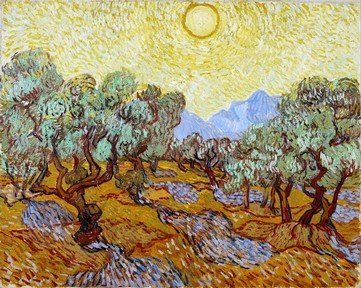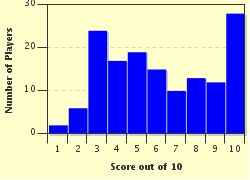Quiz Answer Key and Fun Facts
1. We begin with a portrait of the French writer Émile Zola in his late 20s. Painted in 1868, it is the work of which artist who is widely considered a key figure in the transition from Realism to Impressionism?
2. Going back to the 16th Century, our next offering is a portrait of Saint James the Apostle. It is the work of which German, widely regarded as the greatest artist of the Northern Renaissance?
3. Racing forward to the early 20th Century, our next portrait depicts the French artist Jeanne Hébuterne at the age of 23, less than a year before her tragic death. She was the common-law wife and a frequent subject for which Italian artist with a distinctive painting style?
4. Numerous famous artists have painted the English actor, playwright, theatre manager and producer David Garrick. The pictured portrait is the work of which Swiss-born artist who was a founding member of the "Royal Academy" in London?
5. This portrait depicts Cosimo I de' Medici, who ruled as the first Duke of Tuscany for 37 years in the mid-16th Century. Which Florence-born Mannerist artist painted this and many other members of the court?
6. Artists frequently paint portraits of themselves and their artistic friends. This portrait of Baroque painter Pieter Snayers is by which Flemish artist who was a leading court painter in 17th-Century England?
7. This 1630 portrait depicts the then Spanish Infanta, Maria Anna of Austria, a future Holy Roman Empress. Who is the painter, the court artist of King Philip IV of Spain and a key figure in the Spanish Golden Age?
8. This 1838 portrait of the Polish composer Frédéric Chopin was originally part of a larger painting depicting both Chopin and his lover, the novelist Georges Sand. Who is the artist, the leader of the French Romantic School in the 19th Century?
9. This portrait of the Duke of Wellington was painted in 1814, shortly before his famous victory at Waterloo. Who is this artist, a Spanish Romantic painter, widely considered as both the last of the Old Masters and the first of the moderns?
10. This 1633 portrait depicts the Dutch merchant and explorer Pieter van den Broecke. It was painted by which artist, one of the most important portrait painters of the 17th Century Dutch Golden Age?
Source: Author
EnglishJedi
This quiz was reviewed by FunTrivia editor
looney_tunes before going online.
Any errors found in FunTrivia content are routinely corrected through our feedback system.

